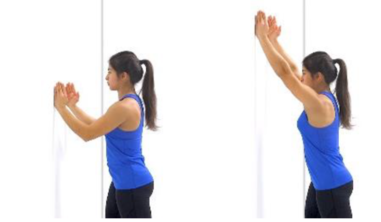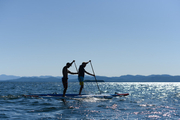It's All Abouth That Base, So Let's Build A Strong One

The shoulder is an amazingly mobile joint that allows you to wave to your friends, throw a football, perform sun salutations in yoga, and attempt to get to that “just out of reach” itch on your back. However, all that mobility comes at a price – the shoulder is inherently unstable! It needs a very strong base to work from so that you don’t develop an injury, such as biceps tendinopathy, bursitis, or even worse, a rotator cuff tear. To the rescue are the scapular stabilizer muscles, consisting of the three portions of the trapezius (upper, middle, & lower), rhomboid major & minor, levator scapulae, and serratus anterior. They all work together to move the shoulder blade so you can have full range of motion, but also to keep the shoulder blade firmly attached to the trunk. Considering that the shoulder and arm only have ONE bony attachment to the rest of the body, the stability provided through these muscles is super important.
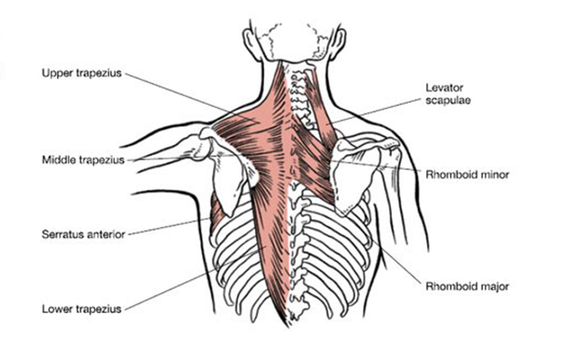
With any of my patients who have shoulder or neck pain, I always evaluate the scapular stabilizers. Weakness usually occurs in the lower scapular stabilizers while the upper stabilizers, the upper trapezius & levator scapula, remain strong. These muscle are overused to compensate, leading to altered mechanics when using the arm and increased tension in the neck. This pattern is so common because we put ourselves in many positions throughout the day that draw our shoulders forward and spread the shoulder blades apart. Think about your posture while working at a computer, sitting on the couch, or driving – are your shoulders rounded forward and elevated? The likely answer is yes! We also perform a lot more pushing motions than pulling motions on a daily basis, so we are overusing our pectorals in the chest and under utilizing the scapular stabilizers.
As a physical therapist, I have a few superstar exercises that I believe everyone can benefit from to create a stable base for your arm to work from, thus allowing you to swim, paddle, throw, climb, yoga, and all those other fun things that we like to do!
Prone shoulder I/T/Ys
These exercises target the middle & lower portions of the trapezius and are called I/T/Ys because your arm motions will make these letters! You can do this by leaning over a stability ball as shown or it can be modified onto your bed by lying with one arm off the edge. Using dumbbells is a progression you can try once you are comfortable with the motions - they're more tiring than they look, so start with lighter weights!
Is
Bring the arms back along your side to make an "I", pinching the shoulder blades together as you do. Perform 2 sets of 15 reps
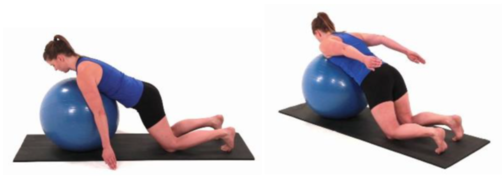
Ts
Bring your arms straight out to the side to make a "T", pinching the shoulder blades as you do. You do not need to raise the arms higher than your body. Perform 2 sets of 15 reps.
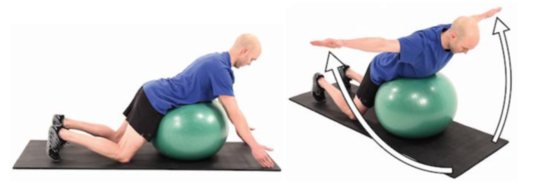
Ys
Bring your arms forward at a diagonal to create the "Y" of the YMCA. Your shoulder blades should pinch together and pull away from your ears. Perform 2 sets of 15 reps.
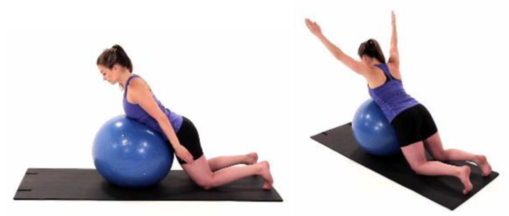
Serratus Punches
This exercise targets the serratus anterior to control protaction, or forward motion, of the shoulder blade. You can start without weights to get comfortable with the motion and then add them later for more strengthening. Perform 2 sets of 15 reps

Serratus Wall Slides
This exercise also targets the serratus anterior, but instead works on the control of scapular rotation for overhead motions. Perform 2 sets of 15 reps.
